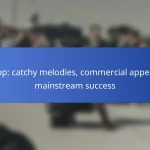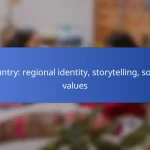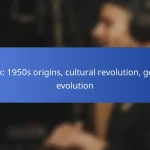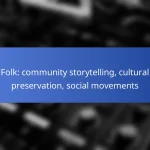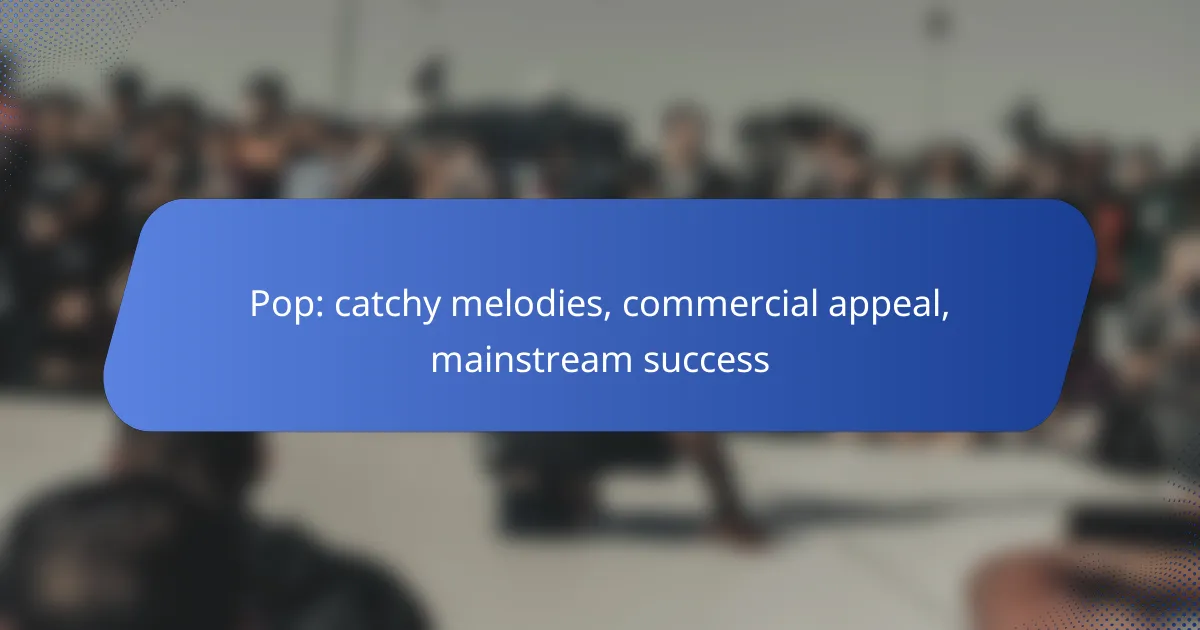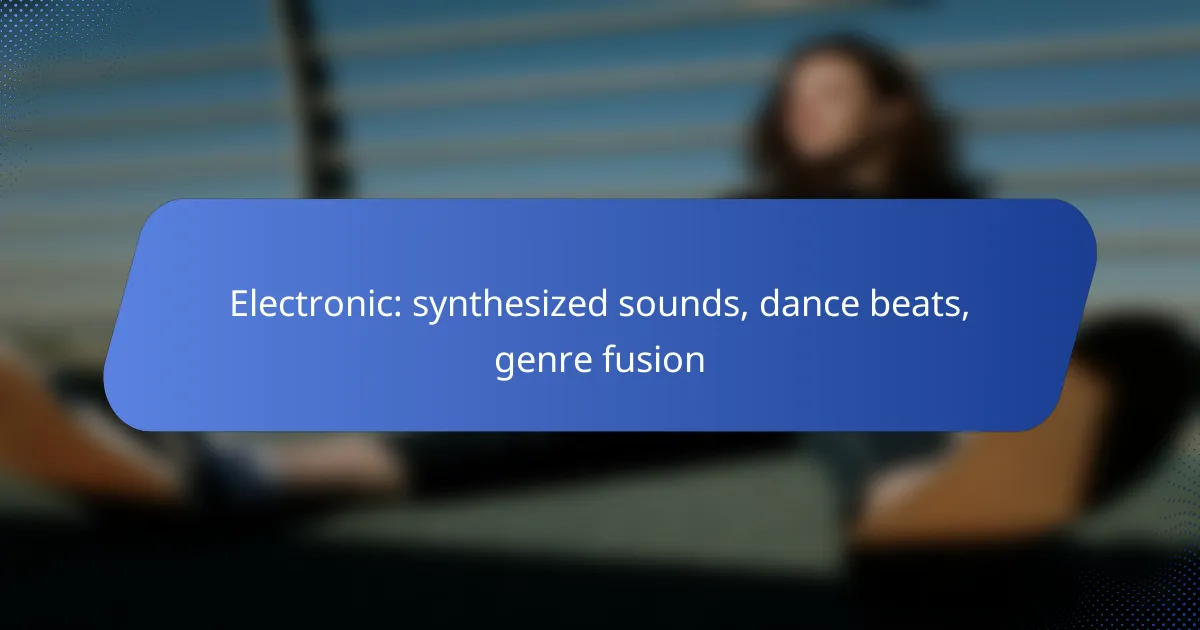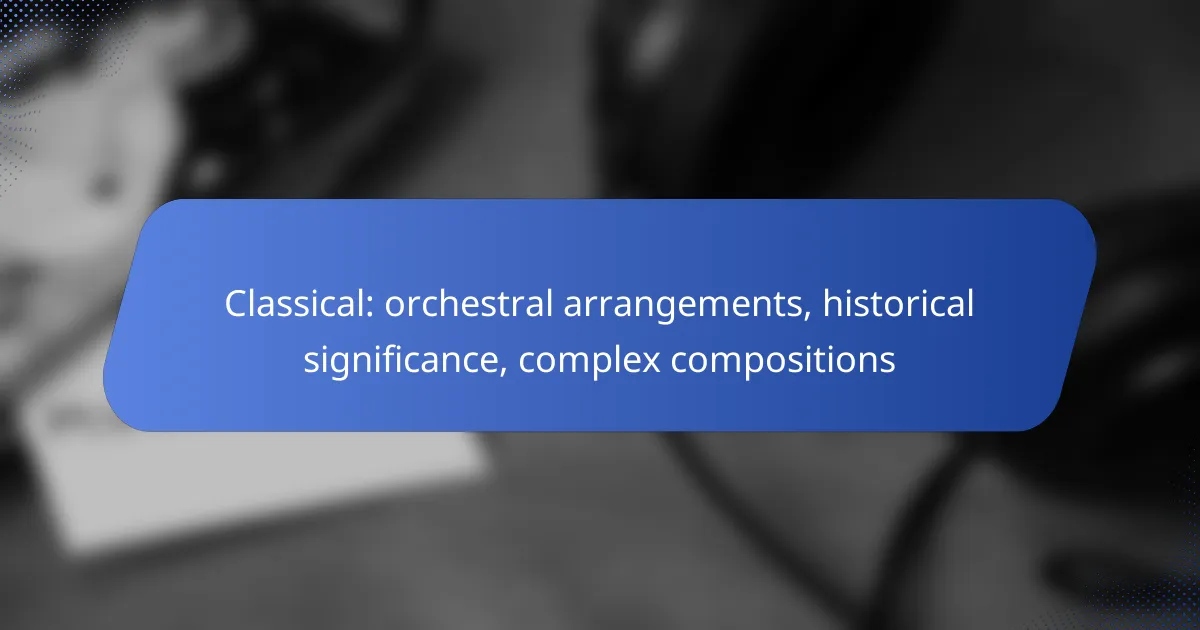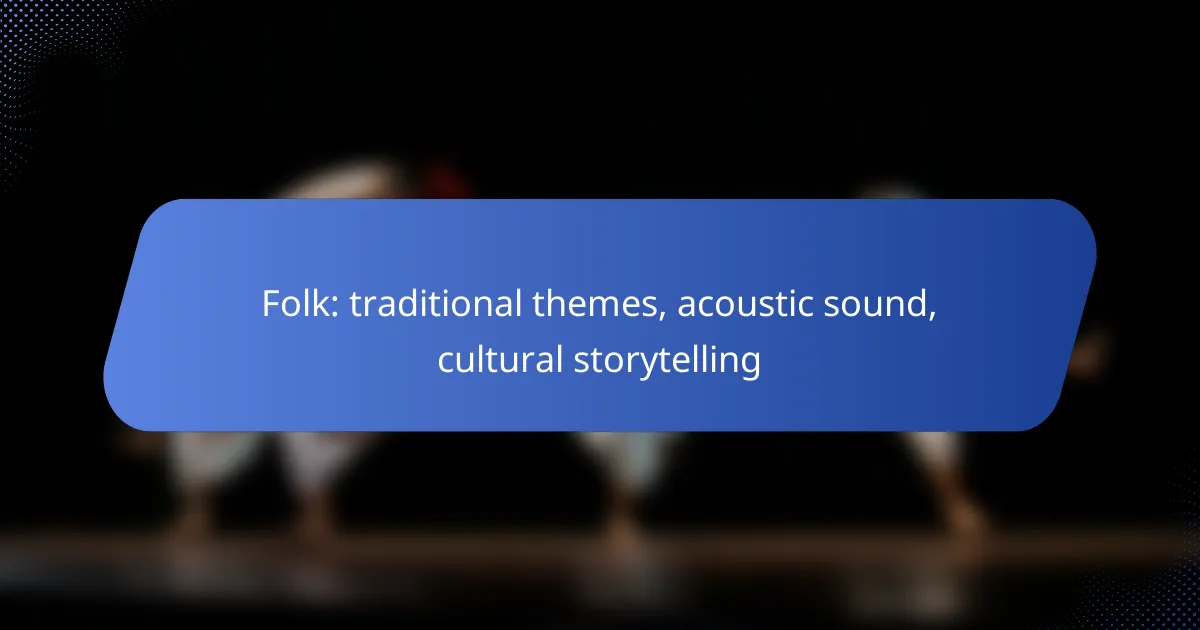Australia’s music scene is a dynamic tapestry of genre-blending artists who push the boundaries of sound while offering insightful cultural commentary. With innovators like Tash Sultana, Hiatus Kaiyote, and Gang of Youths, the landscape is rich with experimental elements that invite listeners to explore new sonic territories. This fusion not only redefines musical norms but also serves as a powerful medium for addressing themes of identity, community, and social justice.
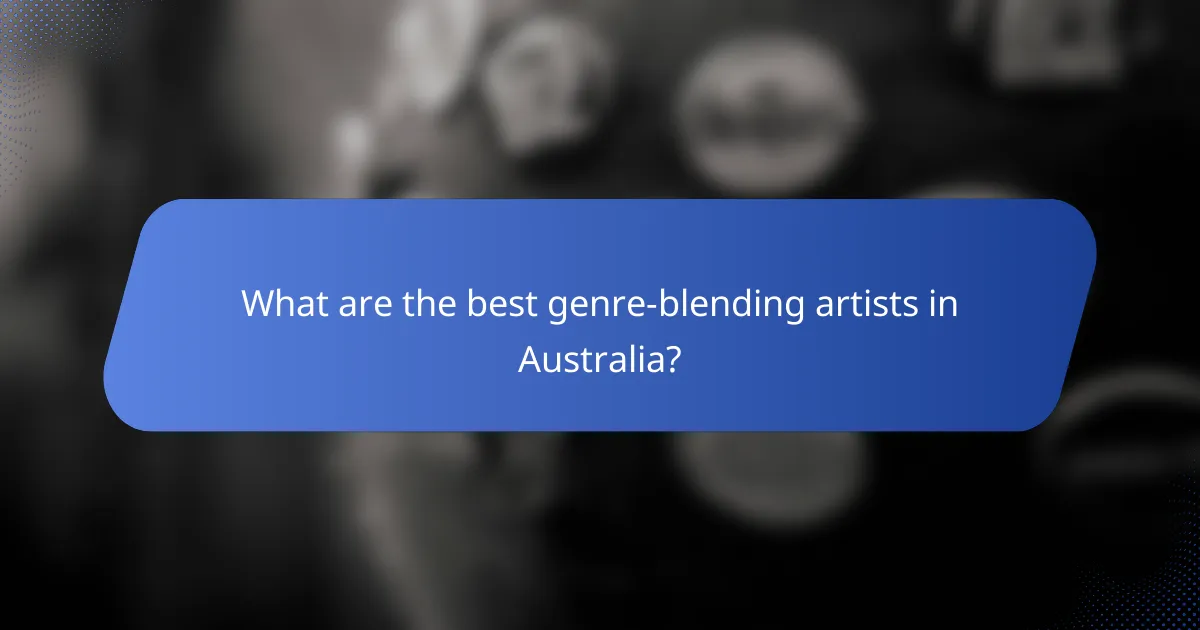
What are the best genre-blending artists in Australia?
Australia is home to a vibrant music scene that features several genre-blending artists known for their innovative sounds and cultural commentary. Notable names include Tash Sultana, Hiatus Kaiyote, and Gang of Youths, each bringing a unique fusion of styles that challenge traditional musical boundaries.
Tash Sultana
Tash Sultana is a multi-instrumentalist and singer-songwriter recognized for her ability to blend rock, reggae, and electronic music. Her live performances often feature looping techniques that create rich, layered soundscapes, allowing her to showcase her versatility and creativity.
With hits like “Jungle” and “Notion,” Sultana’s music often explores themes of self-discovery and personal growth. Her unique approach has garnered a dedicated following, making her a prominent figure in the Australian music landscape.
Hiatus Kaiyote
Hiatus Kaiyote is an experimental soul band that combines elements of R&B, jazz, and electronic music. Their sound is characterized by lush instrumentation and emotive vocals, often addressing social issues and personal experiences through their lyrics.
Their critically acclaimed album “Choose Your Weapon” features tracks that showcase their genre-blending style, appealing to a wide audience. The band’s innovative approach to songwriting and production has earned them recognition both locally and internationally.
Gang of Youths
Gang of Youths is a rock band known for their anthemic sound that fuses indie rock with elements of pop and folk. Their music often reflects on themes of love, loss, and resilience, resonating deeply with listeners.
With albums like “Go Farther in Lightness,” the band has received numerous awards and nominations, solidifying their place in the Australian music scene. Their energetic performances and relatable lyrics make them a standout among genre-blending artists in Australia.
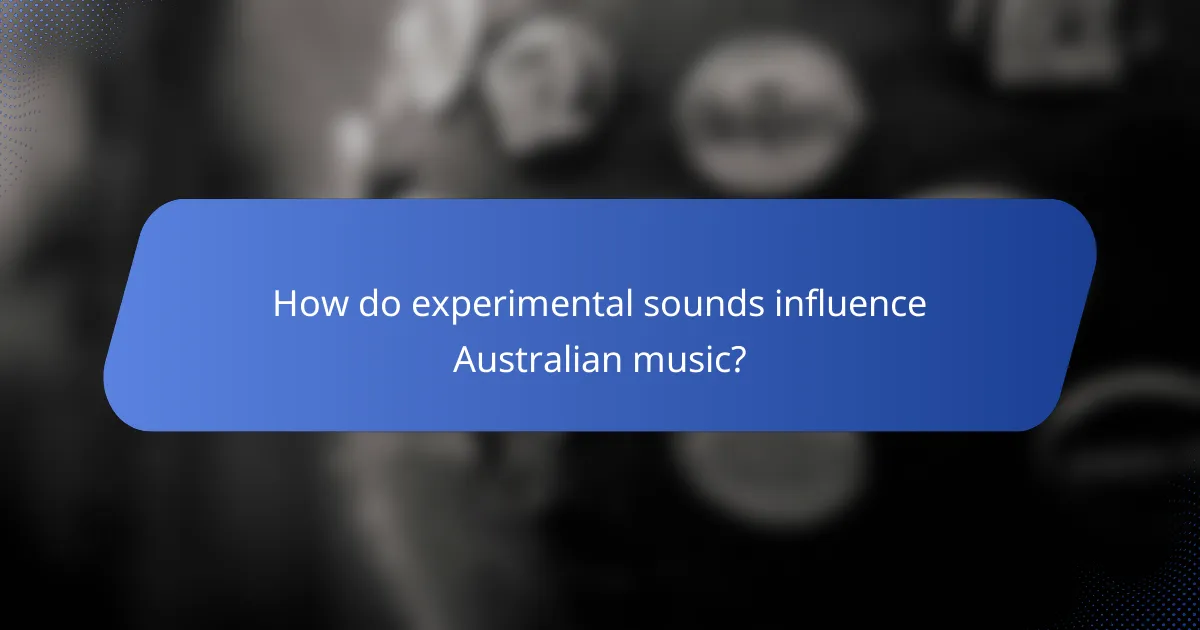
How do experimental sounds influence Australian music?
Experimental sounds significantly shape Australian music by introducing innovative elements that challenge traditional genres. These sounds encourage artists to explore new sonic landscapes, often resulting in unique cultural commentary and fresh musical expressions.
Innovative production techniques
Innovative production techniques are at the forefront of how experimental sounds influence Australian music. Artists often utilize advanced technology, such as digital audio workstations and synthesizers, to create textures that were previously unattainable. Techniques like sampling, looping, and sound manipulation allow musicians to blend organic and electronic sounds seamlessly.
For example, the use of field recordings from Australian landscapes can add a distinct local flavor to tracks, enhancing the cultural relevance of the music. This approach not only diversifies the sound but also connects listeners to the environment and experiences of Australia.
Cross-genre collaborations
Cross-genre collaborations are another vital aspect of how experimental sounds impact Australian music. By working across different musical styles, artists can merge influences from genres like hip-hop, electronic, and indigenous music, creating a rich tapestry of sound. These collaborations often lead to innovative tracks that resonate with diverse audiences.
For instance, collaborations between electronic producers and traditional musicians can result in unique fusions that highlight cultural narratives while appealing to contemporary listeners. This blending of genres not only broadens the audience but also fosters a sense of community among artists from various backgrounds.

What cultural commentary is found in Australian genre-blending music?
Australian genre-blending music often serves as a platform for cultural commentary, reflecting the diverse social landscape and historical contexts of the country. By merging various musical styles, artists convey messages about identity, community, and social justice, engaging listeners in critical conversations.
Social issues reflection
Many Australian genre-blending musicians address pressing social issues such as inequality, climate change, and immigration. For instance, songs may incorporate elements of hip-hop, rock, and electronic music to create powerful narratives that resonate with listeners. This fusion allows artists to reach wider audiences and provoke thought around these important topics.
Artists like Baker Boy and The Kid LAROI exemplify this trend, using their music to highlight personal and communal struggles while fostering a sense of solidarity. Their work often encourages listeners to reflect on societal challenges and consider their roles in effecting change.
Indigenous perspectives
Indigenous artists play a crucial role in Australian genre-blending music, offering unique perspectives that enrich cultural commentary. By integrating traditional sounds with contemporary genres, they bring attention to the histories and experiences of Aboriginal and Torres Strait Islander peoples. This blend not only preserves cultural heritage but also challenges dominant narratives.
For example, artists like Gurrumul and Jessica Mauboy incorporate Indigenous languages and themes into their music, fostering greater awareness and appreciation of Indigenous culture. Their contributions highlight the importance of representation and the ongoing impact of colonization, inviting listeners to engage with these critical issues.

Which platforms showcase alternative music in Australia?
In Australia, several platforms effectively showcase alternative music, providing artists with a space to share their experimental sounds and cultural commentary. Notable among these are Triple J and Bandcamp, each offering unique features that cater to diverse audiences.
Triple J
Triple J is a national radio station that plays a significant role in promoting alternative music in Australia. It features a mix of local and international artists, focusing on genres that blend various styles, making it a go-to platform for discovering new sounds.
The station hosts programs like “Unearthed,” which highlights emerging Australian talent, allowing listeners to engage with fresh music. Artists can submit their tracks for airplay, increasing their visibility within the alternative music scene.
Bandcamp
Bandcamp serves as a vital platform for independent artists in Australia to distribute their alternative music directly to fans. It allows musicians to set their own prices and retain a larger share of the revenue, making it an attractive option for those exploring genre-blending sounds.
With features like fan subscriptions and digital downloads, Bandcamp fosters a community around artists, enabling them to connect with listeners who appreciate their cultural commentary. This platform is particularly useful for niche genres that may not receive mainstream attention.

How to discover new genre-blending music?
Discovering new genre-blending music involves exploring various platforms and events that showcase innovative sounds. By utilizing streaming services and attending music festivals, you can find artists who push the boundaries of traditional genres.
Streaming playlists
Streaming playlists are a convenient way to discover genre-blending music. Platforms like Spotify, Apple Music, and YouTube Music curate playlists that feature a mix of genres, often highlighting emerging artists. Look for playlists labeled as “genre-bending,” “experimental,” or “fusion” to find tracks that combine different musical styles.
Consider following playlists that are updated regularly to keep your listening experience fresh. You can also create your own playlists by combining tracks from various genres, allowing you to explore how different sounds interact. Don’t hesitate to share your playlists with friends to exchange recommendations.
Music festivals
Music festivals often showcase a diverse lineup of artists, making them ideal for discovering genre-blending music. Events like Coachella, Glastonbury, and local festivals typically feature a mix of genres, allowing you to experience live performances that defy traditional categorizations. Check the festival lineup in advance to identify artists known for their experimental sounds.
When attending a festival, be open to exploring acts outside your usual preferences. You might stumble upon unexpected collaborations or unique interpretations of familiar genres. Engaging with fellow festival-goers can also lead to valuable recommendations for artists who blend genres effectively.
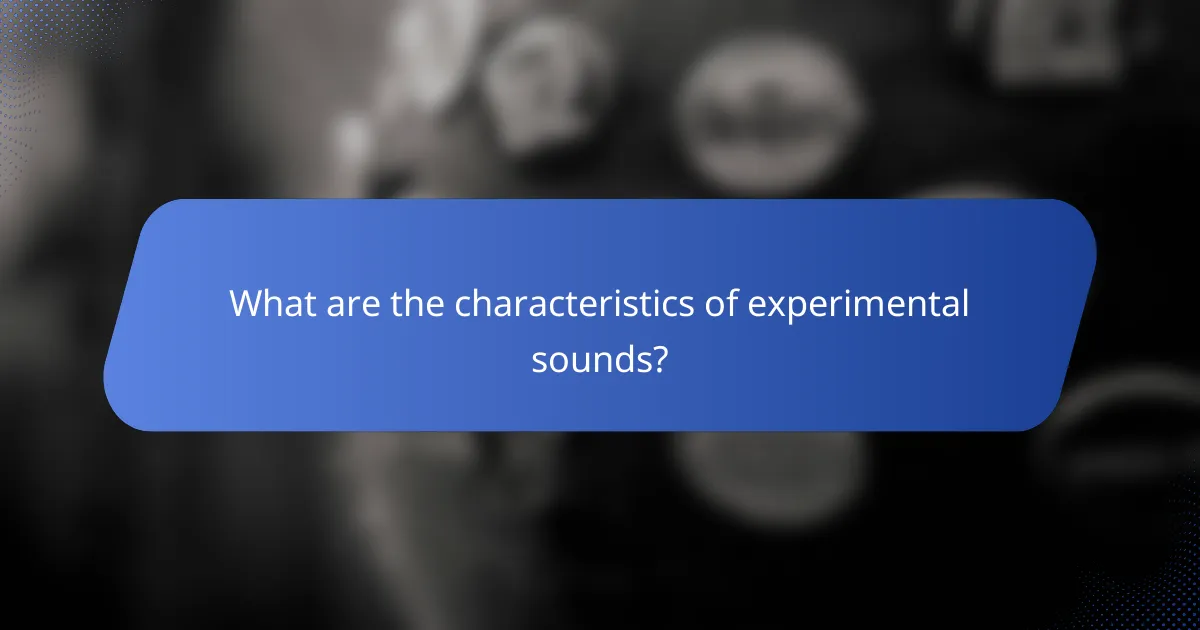
What are the characteristics of experimental sounds?
Experimental sounds are defined by their innovative approaches to music creation, often incorporating unconventional techniques and elements. These sounds challenge traditional musical norms, emphasizing creativity and cultural commentary.
Unconventional instruments
Experimental music frequently utilizes unconventional instruments that deviate from standard musical tools. This can include anything from found objects like metal sheets and glass bottles to electronic devices such as synthesizers and samplers. The choice of instrument often reflects the artist’s intent to explore new textures and sonic possibilities.
For instance, artists may use a prepared piano, where objects are placed on the strings to alter its sound, or circuit-bent toys that produce unpredictable audio. These unconventional instruments can create unique soundscapes that engage listeners in novel ways.
Non-linear song structures
Non-linear song structures are a hallmark of experimental sounds, moving away from traditional verse-chorus formats. Instead, compositions may feature abrupt changes, extended improvisation, or a collage of different musical ideas that do not follow a predictable path. This approach allows for greater artistic freedom and expression.
For example, a piece might start with a quiet ambient section, transition into an intense noise segment, and then shift to a minimalist rhythm, all without a clear progression. This unpredictability can create a more immersive listening experience, inviting the audience to engage with the music on a deeper level.
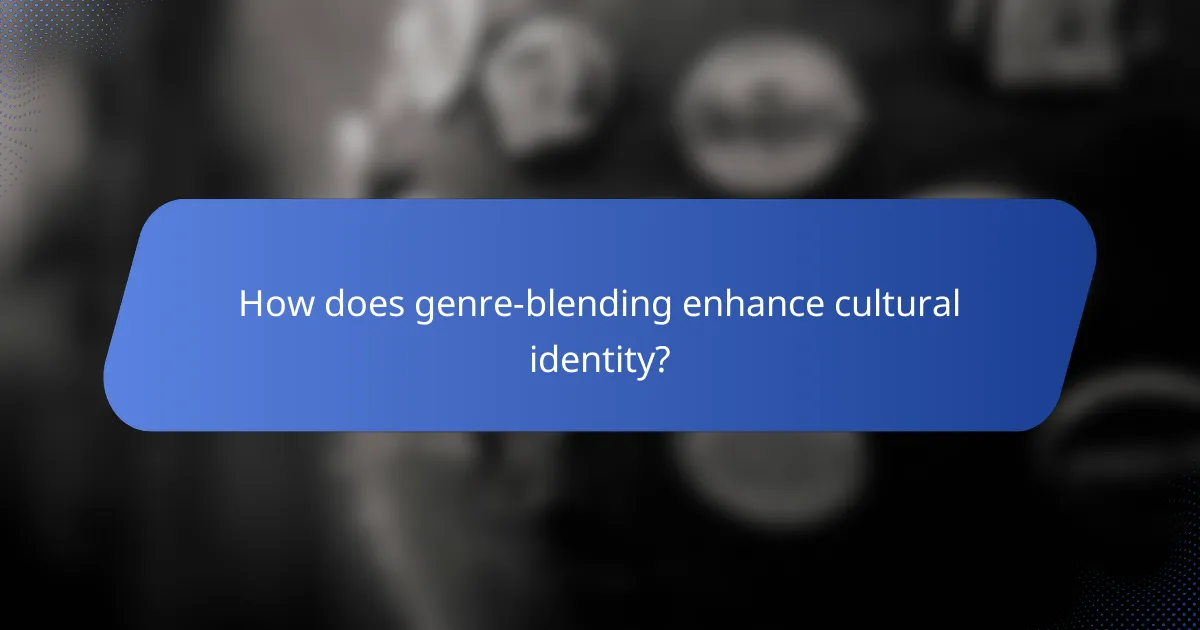
How does genre-blending enhance cultural identity?
Genre-blending enhances cultural identity by merging different musical styles, allowing for a richer expression of diverse cultural backgrounds. This fusion creates unique sounds that reflect the complexities of identity in a globalized world.
Fusion of traditions
The fusion of traditions occurs when artists combine elements from various cultural heritages, resulting in innovative music that honors multiple influences. For instance, a blend of African rhythms with Western pop can create a vibrant sound that resonates with diverse audiences.
Artists like Shakira exemplify this by incorporating Latin, rock, and Middle Eastern influences into her music, creating a distinctive style that appeals to a broad demographic. This blending not only showcases individual artistry but also fosters a sense of belonging among listeners who identify with those traditions.
Global influences
Global influences play a crucial role in genre-blending, as artists draw inspiration from international sounds and styles. The rise of digital platforms has made it easier for musicians to access and integrate diverse genres, leading to innovative collaborations across borders.
For example, K-pop has successfully integrated elements of hip-hop, R&B, and electronic music, creating a global phenomenon. This cross-pollination of genres not only enriches the music landscape but also promotes cultural exchange and understanding among different communities.

What are the challenges faced by genre-blending artists?
Genre-blending artists encounter various challenges, including identity confusion, market acceptance, and the difficulty of reaching audiences. These obstacles can hinder their creative expression and commercial success.
Identity and Authenticity
One major challenge for genre-blending artists is maintaining a clear sense of identity while experimenting with different styles. They often face scrutiny from purists who may question their authenticity. Balancing personal expression with audience expectations can lead to creative tension.
Market Acceptance
Genre-blending can complicate market acceptance, as traditional music labels and platforms often prefer clear categorizations. This can make it difficult for artists to secure contracts or radio play. To navigate this, artists should consider targeting niche markets or leveraging social media to build a dedicated fanbase.
Audience Engagement
Engaging audiences can be tricky for genre-blending artists, as listeners may have preconceived notions about what they enjoy. Artists should focus on creating relatable content that resonates across genres. Collaborations with established artists in different genres can also help attract a wider audience.
Creative Constraints
While blending genres allows for innovation, it can also impose creative constraints. Artists may struggle to find a cohesive sound that represents their vision. Experimenting with various combinations and seeking feedback from diverse listeners can help refine their style without losing their unique voice.
